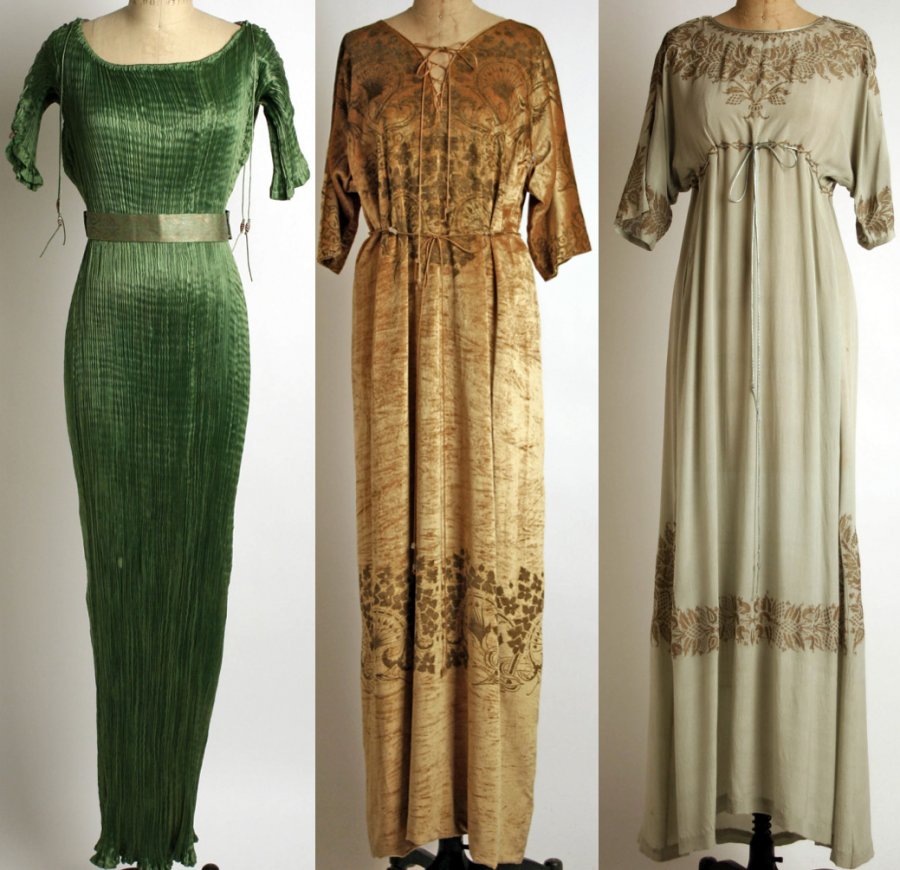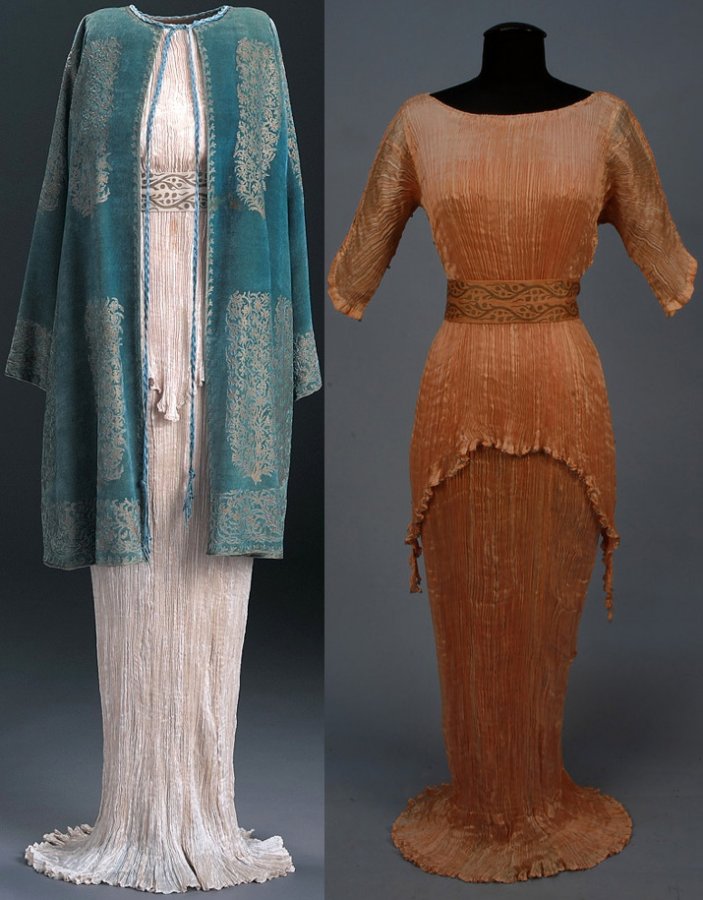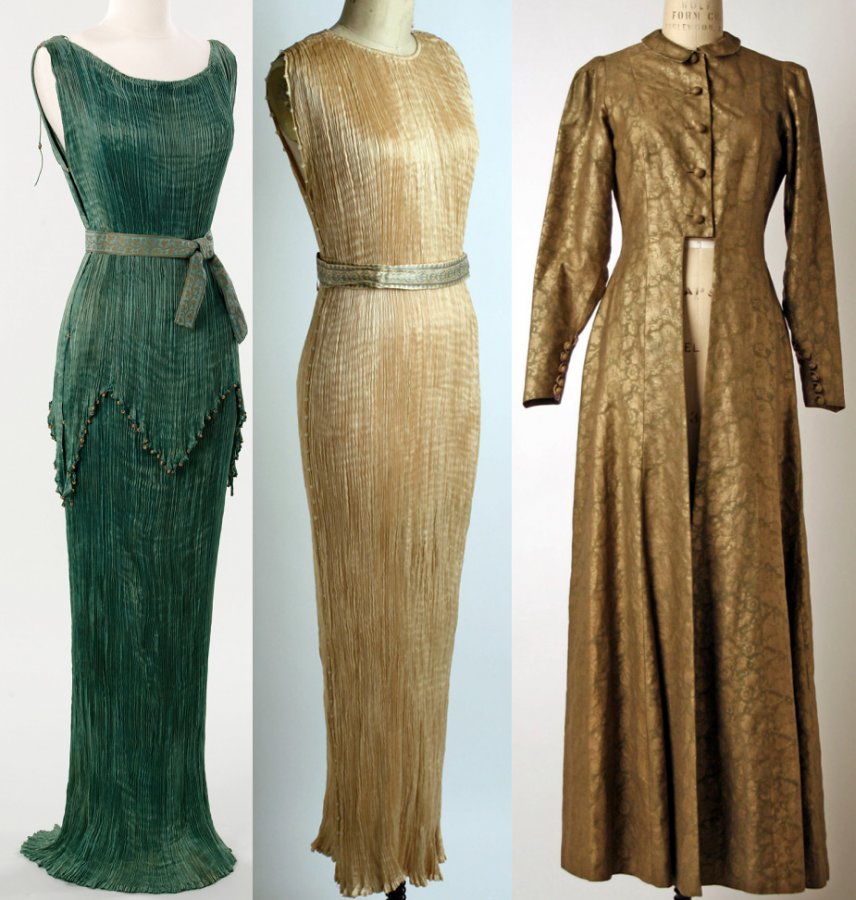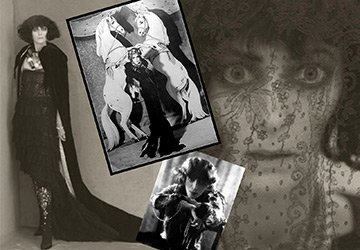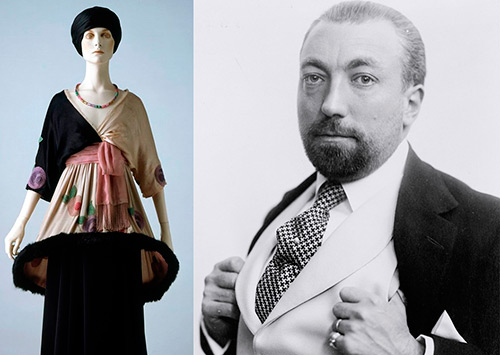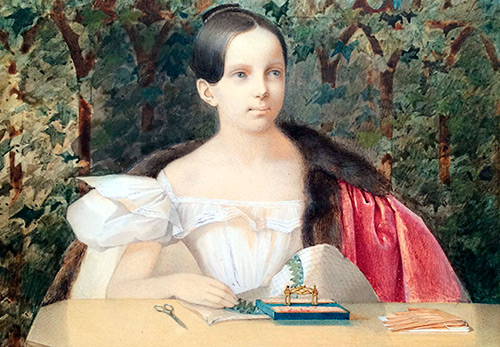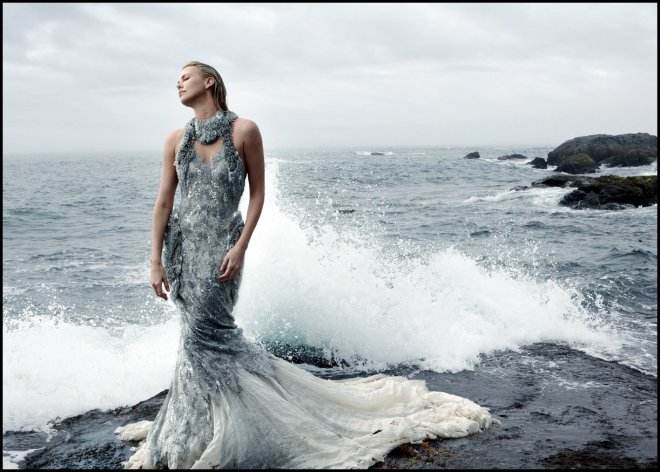Beautiful dresses
Mariano Fortuny - dresses and biography
Mariano Fortuny y Madrazo (Spanish Mariano Fortuny y Madrazo) - 05/11/1871 - 05/03/1949 - an outstanding inventor and decorator, an excellent artist and photographer.
Mariano Fortuny was born on May 11, 1871 in the Spanish province of Granada. In a family where everyone was associated with art, and Mariano also dreamed of becoming an artist. His father, Mariano Fortuny y Marseille, was a famous painter, his mother was the daughter of the famous Spanish artist Raimundo de Madrazo y Garrett. When Mariano was not yet four years old, his father died, and the family moved to France, to Paris. From early childhood it was already clear that the boy inherited the talent of his famous father. Soon he begins to study painting.
When he was 18 years old, the family left Paris and settled in Venice... Later it turned out that Mariano possessed not only the talent of a painter, but also other versatile abilities: he excelled in photography, sculpture and architecture. In addition, Mariano became interested in fabrics and paints, new ways of applying a pattern to fabric. This makes him experiment with different fabrics - velvet, silk and other materials.
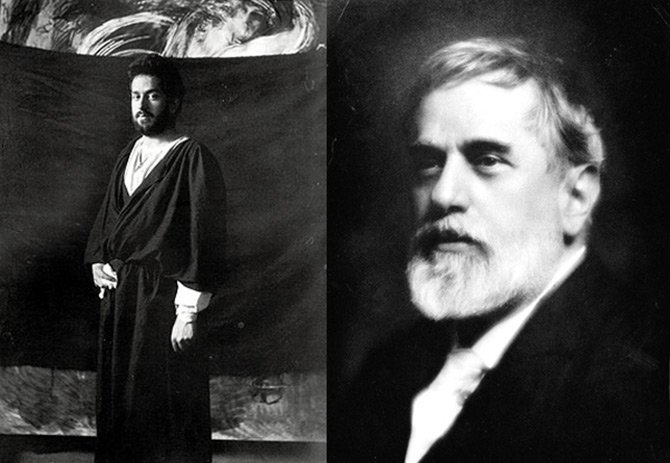
Interest in many types of art makes him want to travel. He is looking for outstanding artists. In Paris, he meets Richard Wagner, a German composer, and travels to Germany, to the city of Bayreuth. It was here in Bayreuth that Wagner built a theater to stage his operas. As if spellbound, Mariano looked at the theater and everything that happened in it.
He fired up the opportunity to invest his labor in the life of the theater and began with the right decision - in order to achieve significant success and results in what was conceived, it is first necessary to study the whole process, from the birth of an idea to its implementation. On his return to Venice, he decides to paint several scenes for Wagner.
In Wagner's theatrical productions, everything was interconnected - scenery, songs, dances, music, architecture, poetry. A special atmosphere reigned here, where there was a place for Mariano's talents to unfold.
Fortuny tried to delve into all the details associated with the performances in the theater. He has worked in every theatrical position, ranging from lighting, architect, decorator and ending with the activities of the inventor, and then the director of the theater.
One of the most outstanding inventions for the theater was his experiments with light. By experimenting, Fortuny found out that light can change its hue, reflecting from different surfaces, as well as its intensity and some other properties. With the help of light and his inventions, he was able to create any "sky" in theatrical performance - from dusk to dawn.
His theatrical inventions made it possible to create a lot in world drama, but the name of Mariano Fortuny remained in the memory of posterity, thanks to his design research.
It was painting that helped Fortuny learn to subtly feel color. And it helped him in designing clothes and creating fabrics. To some extent, his wife, Henrietta Negrin, who had extensive experience in tailoring, also contributed to these activities. Fortuny was fascinated by the ancient Greek and Venetian styles, and the love he inherited from his father for everything Asian inspired him to make great discoveries in the art of design.
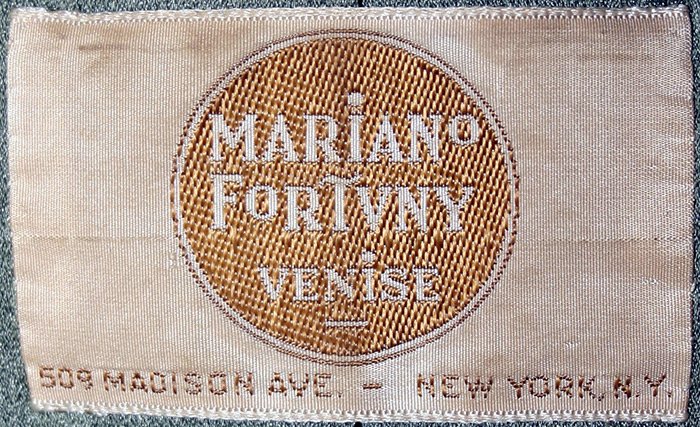
At the beginning of the 20th century, modernism dominated all areas of art. The couple lived in their own palazzo in Venice. Almost all the rooms were filled with paintings: there were not only the works of Mariano's father, but also the works of many other artists that his father collected. And later they were joined by paintings collected by Mariano Fortuny himself.
Fashion did not interest Mariano at all.Why did masterpiece dresses appear? He sewed them for the sake of art. He was persuaded to found his own Fashion House, but this idea was not for him - Mariano was also trying to invent something new in fashion. He was not only an artist and photographer, printer and collector, but also an engineer-inventor, which made him seek and experiment.
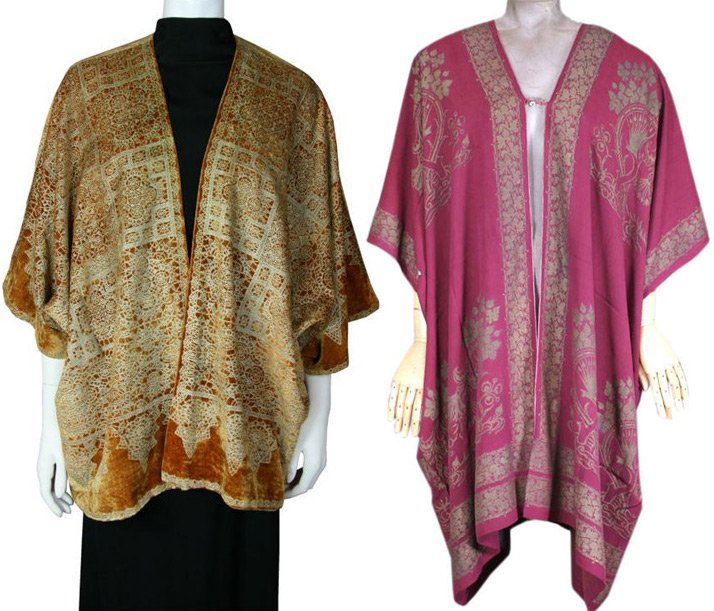
One of the first experiments in 1906 was the so-called "Knossos scarves" or "Knossos shawls" - a sari-type veil with which Mata Hari covered her graceful body in her dances. It was a rectangular canvas with a geometric pattern that could be wrapped around the body, creating a variety of combinations that did not hinder movement. A simple scarf could turn into a jacket, a skirt, or a tunic. When creating all his things, Fortuny, like a real artist, strove to emphasize the curves and shapes of the female body. Therefore, he has always been an opponent of unnecessary embellishments that distract the eye from real beauty.
In 1907, the designer creates the Delphos dress - "Delphos", a tunic dress made of pleated silk that has become immortal. It was recognized as a work of art and became a real event for corset women. Like the dress of an antique statue, the hem of the dress falls in heavy folds on the floor, creating a columnar silhouette. A dress of simple cut, which "... does not show anything, and does not hide anything ...", freely falls from the shoulders, it has no darts and lining, softly fits the figure and emphasizes the natural lines of the female body.
The tunic dress becomes the dress of modern dancers. It was an invention for which Fortuny received a patent in 1909. Inspired by Greek dress and eroticism, Mariano Fortuny has created a range of Delphos dresses. The dress corresponded to the spirit of the Art Nouveau era, many designers were guided by it, especially his friend Paul Poiret, and then the Japanese Issey Miyake. There are many different options for a tunic dress: with long sleeves, with short, wide sleeves, or even without sleeves.
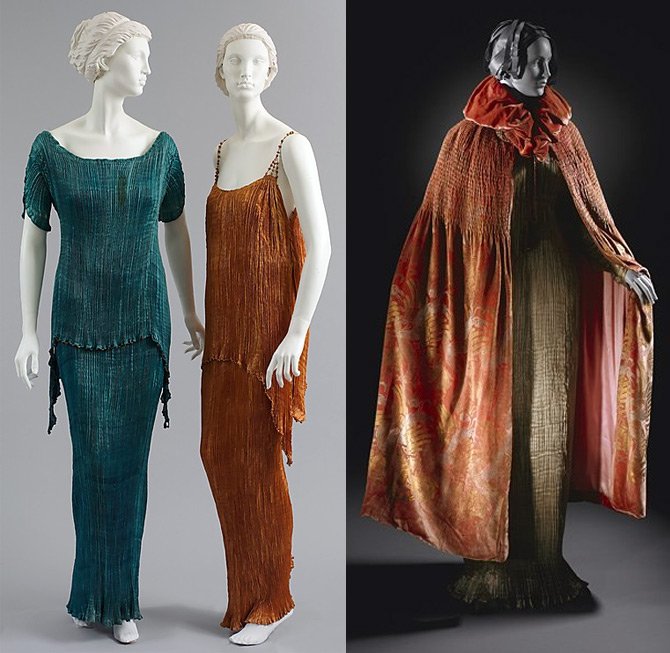
Dresses "Delphos" had sleeves that resembled the wings of a bat, a wide neckline - "boat" and a lace that allows you to adjust the shoulders. There were dresses along the hem decorated with small Venetian glass beads, which was not only a magnificent decoration, but at the same time a technical idea - under the weight of beads, pleated silk flowed softly along the body and fell, hugging the figure, and did not lie at random.
For a long time, women could not dare to wear this dress as an everyday outfit. This dress was considered a "tea" dress, or home dress, in which guests were received, moreover, in a narrow circle. But only in the 20swhen the outfits bared the female body "utterly", the ladies dared to wear it outside the house. The dress acquired the status of an evening dress. It was an outfit of extraordinary beauty - pleated silk shimmered and flowed, and its silvery color changed its shade depending on the lighting. After all, no one else knew enough about the properties of lighting, as Mariano Fortuny knew.
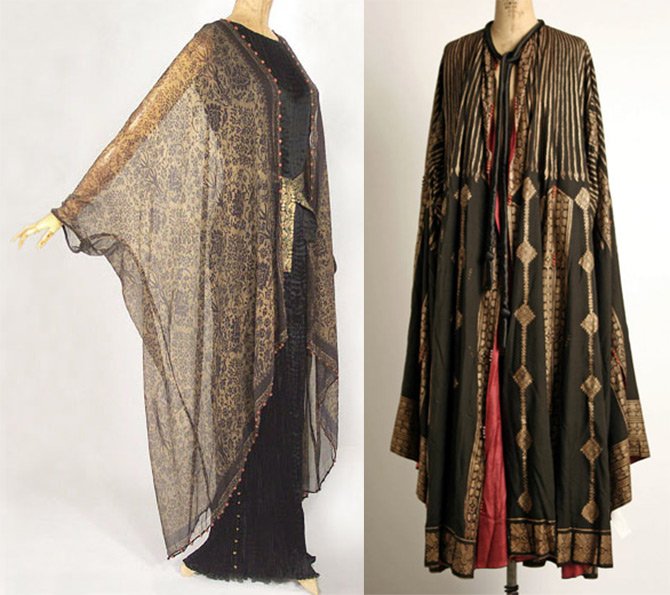
Fortuny invented a method of pleating silk that proved to be very effective. Dresses created using this technology, the secret of which still remains undisclosed, retain their freshness for a long time. In addition, these dresses do not need to be ironed, and when folded they can be placed in a small box, which makes them comfortable during the trip.
Mariano Fortuny experimented not only with silk, but also with velvet. He was carried away by printing a pattern on velvet, from which dresses, jackets, capes were sewn. Mariano himself personally made paints according to old recipes, invented a device for printing drawings, for which he received a patent.
Since 1909, having opened a showroom in Venice, he has been selling his textiles and clothing. Shops have been opened in Paris and Milan since 1920. For Mariano Fortuny, fashion was a part of art, not subject to the laws of the commercial market.While many of Fortuny's contemporaries offered the fashion world projects designed for a certain moment in life and doomed to gradual fading, Fortuny's inventions are distinguished by the fact that they are timeless, they do not age. Elegant simplicity, perfect cut and unusual color - all these elements make his products not just a piece of clothing, but also an object of art, including a dress - Delphos.
Until now, various museums around the world and private collectors strive to acquire at least one such dress and are ready to give almost any money for it. By the way, at auctions the amount can be up to 40 thousand dollars. All Fortuny's models can be considered museum pieces, they are so valuable.
Today at Venice, in the house of an outstanding person, there is a museum. This house was acquired by Fortuny at the beginning of the 20th century. It was here that he lived most of his life and made many of his discoveries. He called this house his "think tank". Now, various exhibitions are often held here.
From 1901 to 1933, Mariano Fortuny received 18 patents for his inventions, moreover, in various fields.
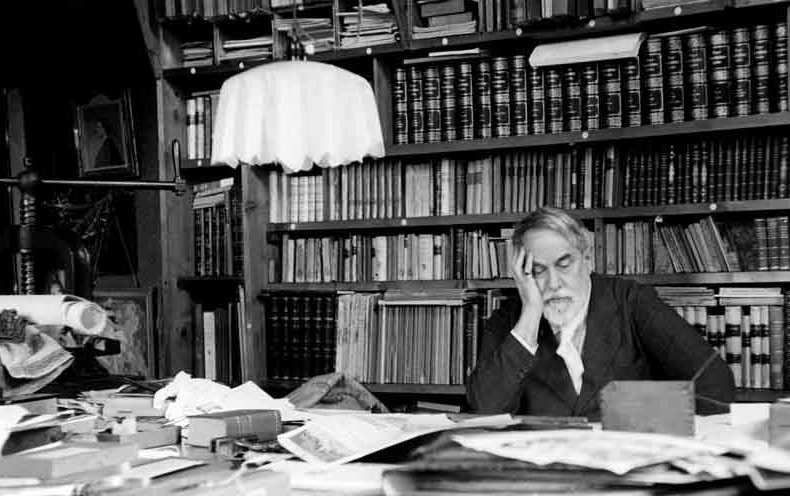
Comments and Reviews
Add a comment
Rating news
Shades of clothing that make women look younger
What shades of hair make women younger: rules and photos
Funny wedding dresses - photos and ideas
12 most expensive down jackets for the winter
How to look 25 at 40: tips from supermodels
Beautiful schoolgirls
Anti-aging haircuts and hairstyles for women
Fashionable skirts for autumn and winter
Fashionable women's trousers for the cold season
Fashionable and stylish sandals for summer 2024
Spring-summer 2024
 Fashionable dresses and tops with thin spaghetti straps
Fashionable dresses and tops with thin spaghetti straps
 Bandana tops: how to wear stylishly and beautifully
Bandana tops: how to wear stylishly and beautifully
 How to put together the perfect men's wardrobe for the summer
How to put together the perfect men's wardrobe for the summer
 Fashionable shorts for spring-summer 2024
Fashionable shorts for spring-summer 2024
 Fashionable skirts for spring-summer 2024: a guide to online shopping
Fashionable skirts for spring-summer 2024: a guide to online shopping
 The most fashionable dresses spring-summer 2024: styles and colors
The most fashionable dresses spring-summer 2024: styles and colors
 Fashionable total look 2024: ideas of images and trends
Fashionable total look 2024: ideas of images and trends
